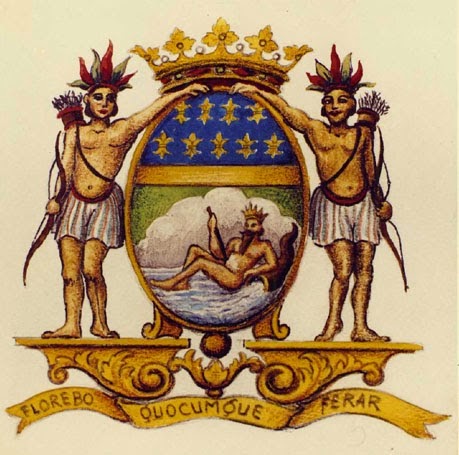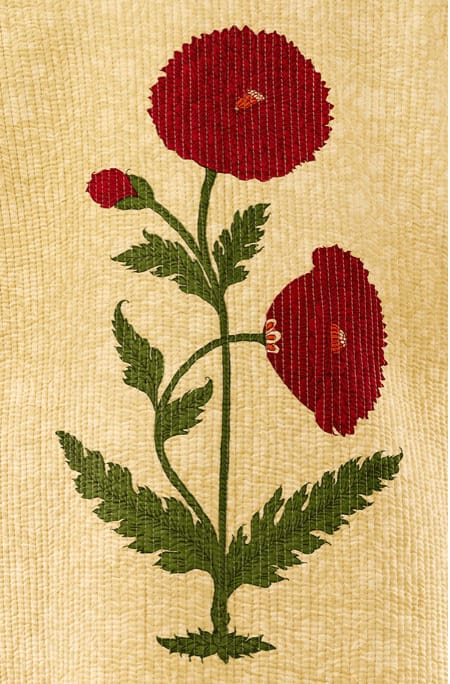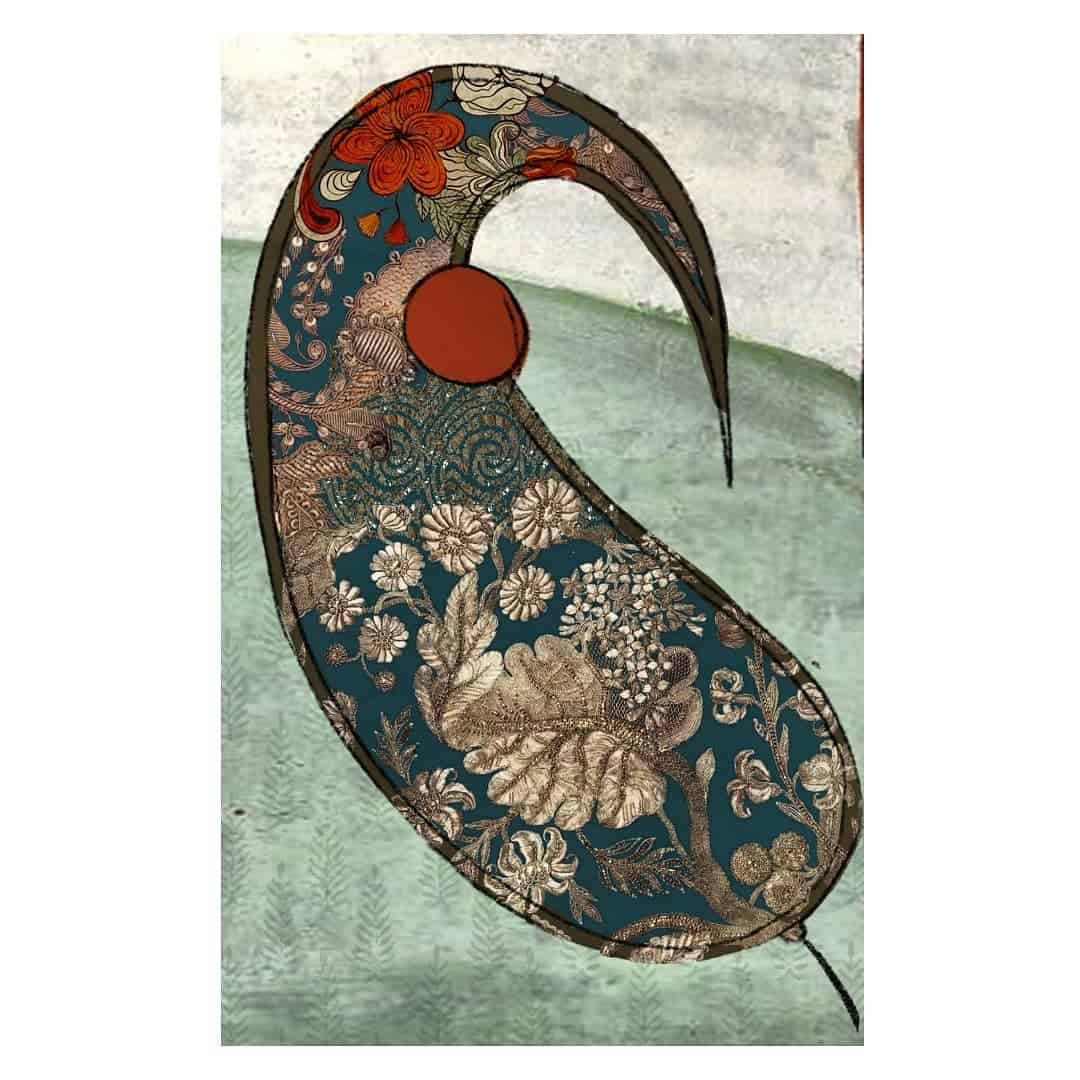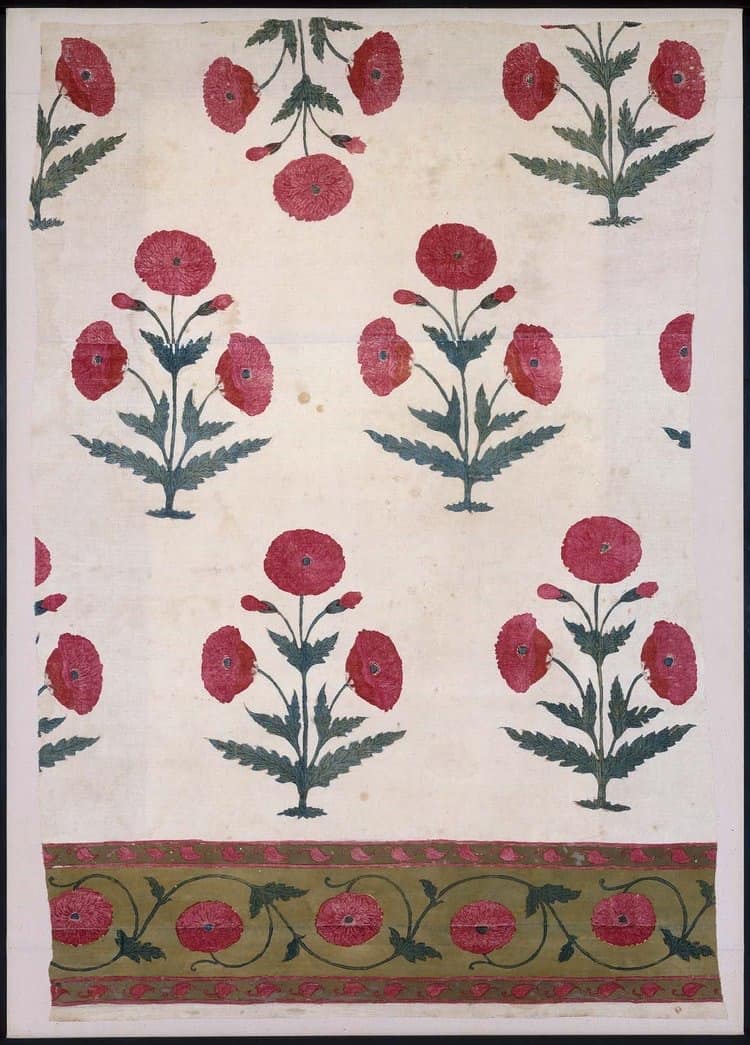12 Dec The Indo-French Art Connection
[vc_row css_animation="" row_type="row" use_row_as_full_screen_section="no" type="full_width" angled_section="no" text_align="left" background_image_as_pattern="without_pattern" css=".vc_custom_1607820803594{padding-right: 15px !important;}" z_index=""][vc_column offset="vc_col-xs-12"][vc_column_text]Indo-French Art : The historical connection between India and France goes back to the late 17th and 18th centuries when French ships arrived to set up trading centers in Pondicherry, the then Masulipatnam, and Surat, amongst others. Of course, the French were never as prominent in India as the English, finally losing the race to colonize India after the Battle of Plassey in 1757. The politics of the time also meant that early European painters in India were all or mostly British, establishing what came to be known as the Company School, a painting style combining English and Indian art styles. In India, early art schools in the then Bombay and Calcutta were also established by the British and taught art based on European classicism.09 Dec Indian Floral Patterns in Design and Textiles
[vc_row css_animation="" row_type="row" use_row_as_full_screen_section="no" type="full_width" angled_section="no" text_align="left" background_image_as_pattern="without_pattern" css=".vc_custom_1607483106680{padding-right: 15px !important;}" z_index=""][vc_column offset="vc_col-xs-12"][vc_column_text]
Indian Floral : For centuries, plants and flowers have inspired Indian artists of different genres. The lotus flowers and floral meanders depicted in the Buddhist sites dating back to the 3rd century, the depiction of Hindu God Vishnu on a throne of a lotus flower, and the famous paintings of Ajanta and Ellora caves from the 5th century are the most excellent and oldest examples depicting florals in Indian Art. However, florals did not become the design language for Indian textiles for a long time, not until the beginning of the Sultanate Period in the twelfth century when Islamic culture started influencing Indian art & design.
05 Dec The Pahari School of Paintings: The Beautiful Indian Art
[vc_row css_animation="" row_type="row" use_row_as_full_screen_section="no" type="full_width" angled_section="no" text_align="left" background_image_as_pattern="without_pattern" css=".vc_custom_1607212846749{padding-right: 15px !important;}" z_index=""][vc_column offset="vc_col-xs-12"][vc_column_text]
Indian Art
[caption id="attachment_3273" align="alignleft" width="400"] Jain school of Gujarat.[/caption]
Jain school of Gujarat.[/caption]The history of painting in India goes back 2000 years, something that many do not realize, starting with the beautiful murals of Ajanta, which are interesting too because they show people wearing craft still extant. The 11th century saw the illustrated Pala manuscripts, painted on palm leaves, and the earliest example of miniature painting in India. The next development was the Jain school of Gujarat, which eventually lead to the Rajput tradition of miniature art. As it grew and developed, the Rajput tradition divided into two distinct schools, Rajput and the Pahari school, based in Himachal Pradesh, the hilly state in the north-west of India.
10 Nov Jim Thompson an American Businessman Who Revitalized the Thai Silk Industry
[vc_row css_animation="" row_type="row" use_row_as_full_screen_section="no" type="full_width" angled_section="no" text_align="left" background_image_as_pattern="without_pattern" css=".vc_custom_1605059524618{padding-right: 15px !important;}" z_index=""][vc_column css=".vc_custom_1605055623830{padding-right: 15px !important;}" offset="vc_col-xs-12"][vc_column_text]Jim Thompson: Hours to kill at an airport when you're waiting for a flight is usually a time filled with tedium. But not when you're at Bangkok airport. Reason? Several Jim Thompson boutiques are scattered over the shopping concourse, leading to hours of pleasurable browsing and shopping.[/vc_column_text][vc_empty_space][vc_single_image image="3188" img_size="full" add_caption="yes" qode_css_animation=""][vc_empty_space][vc_column_text] Jim Thompson was not born a designer. He studied architecture at Princeton and eventually enlisted in the Delaware National Guard in 1940, leading to a posting in Thailand with the ending of World War 2. While he was in Thailand, he was very taken with the country’s lifestyle and culture and chose to settle there.
Jim Thompson was not born a designer. He studied architecture at Princeton and eventually enlisted in the Delaware National Guard in 1940, leading to a posting in Thailand with the ending of World War 2. While he was in Thailand, he was very taken with the country’s lifestyle and culture and chose to settle there.05 Nov Micro Mosaic a Popular Art from the 19th Century
[vc_row css_animation="" row_type="row" use_row_as_full_screen_section="no" type="full_width" angled_section="no" text_align="left" background_image_as_pattern="without_pattern" css=".vc_custom_1604552988400{padding-right: 15px !important;}" z_index=""][vc_column offset="vc_col-xs-12"][vc_column_text]Micro Mosaic
[caption id="attachment_3172" align="alignleft" width="250"] Byzantine mosaic[/caption]
Byzantine mosaic[/caption]There is something about the miniature, but perfect and complete that gets me every time. And I know I'm not the only one. Is it an adult fascination with dollhouses? Or the desire to control a tiny universe? I don't know. But Micromosaics have always fascinated me.
MUGHAL & DUTCH: A CULTURAL BRIDGING OF 2 GREAT ARTISTIC TRADITIONS
THE MUGHAL EMPERORS LOVE FOR BEAUTIFUL FLOWERS AND FLORAL DESIGNS
Mosaics have been around from the third century BC, particularly in Ancient Rome, composed of glass and terracotta. However, they came into their own in the Byzantine era, where they adorned the churches. This tradition was continued during the Renaissance, as in the ceiling of St Peter's Basilica by Michaelangelo.
23 Oct Hand Blockprinting Fame, Colors, and Floral Designs of Sanganer
[vc_row css_animation="" row_type="row" use_row_as_full_screen_section="no" type="full_width" angled_section="no" text_align="left" background_image_as_pattern="without_pattern" css=".vc_custom_1605637052478{padding-right: 15px !important;}" z_index=""][vc_column offset="vc_col-xs-12"][vc_column_text]How did this small town come to be known as the best in the history of Hand Blockprinting?
 It was usual for the Rajasthan medieval elites to have musicians, artists, and craftsmen associated with their family. The artists were attached to their patron’s family. They would create a whole gamut of objects and arts in-house for family-like jewelry, clothes, music, bangles or prints, etc. Sanganer became a land of great artists and patronizing families. Whenever the king or the ruler needed something particular, word of mouth would search for unique skillsets. The best artisans would be found and sent. The selected printers and dyers would prepare a new design or a new shade of color for their king. And that’s how the skills of the artisans of Sanganer became known and sought by higher nobility.This type of patronage was not just a way for economic sustenance for artisans, but also a peek into the outside world, offering the artisans a channel for aesthetic inputs. [/vc_column_text][vc_empty_space][vc_column_text]
It was usual for the Rajasthan medieval elites to have musicians, artists, and craftsmen associated with their family. The artists were attached to their patron’s family. They would create a whole gamut of objects and arts in-house for family-like jewelry, clothes, music, bangles or prints, etc. Sanganer became a land of great artists and patronizing families. Whenever the king or the ruler needed something particular, word of mouth would search for unique skillsets. The best artisans would be found and sent. The selected printers and dyers would prepare a new design or a new shade of color for their king. And that’s how the skills of the artisans of Sanganer became known and sought by higher nobility.This type of patronage was not just a way for economic sustenance for artisans, but also a peek into the outside world, offering the artisans a channel for aesthetic inputs. [/vc_column_text][vc_empty_space][vc_column_text] Sanganer Hand Blockprinting: Like every other textile lover, I visited Jaipur searching for exquisite ‘vintage’ textiles, decorated with hand block printed florals in gorgeous shades of aged reds, greens, and indigo from the era of nobility and generous patronage in the history of Jaipur. I ended up traveling 13 km away from the central city to get to this self-contained city of Sanganer packed with old structures and temples of great details and architecture. It is a town known for its unique ‘sanganeri’ hand block printing technique. It was revelatory to stumble onto Sanganer’s various sister crafts like handmade papermaking, gold and silver foil making, and cotton weaving. The small town has its artisanal ecology.
Sanganer Hand Blockprinting: Like every other textile lover, I visited Jaipur searching for exquisite ‘vintage’ textiles, decorated with hand block printed florals in gorgeous shades of aged reds, greens, and indigo from the era of nobility and generous patronage in the history of Jaipur. I ended up traveling 13 km away from the central city to get to this self-contained city of Sanganer packed with old structures and temples of great details and architecture. It is a town known for its unique ‘sanganeri’ hand block printing technique. It was revelatory to stumble onto Sanganer’s various sister crafts like handmade papermaking, gold and silver foil making, and cotton weaving. The small town has its artisanal ecology.12 Oct Paisley A Genuinely Global Motif in the Design World
[vc_row css_animation="" row_type="row" use_row_as_full_screen_section="no" type="full_width" angled_section="no" text_align="left" background_image_as_pattern="without_pattern" css=".vc_custom_1602312597016{padding-right: 15px !important;}" z_index=""][vc_column offset="vc_col-xs-12"][vc_single_image image="3088" img_size="full" add_caption="yes" qode_css_animation=""][vc_column_text]
Paisley is a genuinely global motif that survived many years, passing through various cultures, evolving into many shapes, names, and colors. The credit for this goes to the endless love of this motif from the tastemakers worldwide. This article traces the origin, movement, evolution, and beauty of this antique motif, which is still a design identity of fashion and home companies from ‘Etro’ in Italy to ‘Kashmir Loom’ in India.
09 Oct The Mughal Emperors Love for Beautiful Flowers and Floral Designs
[vc_row css_animation="" row_type="row" use_row_as_full_screen_section="no" type="full_width" angled_section="no" text_align="left" background_image_as_pattern="without_pattern" css=".vc_custom_1602280043378{padding-right: 15px !important;}" z_index=""][vc_column offset="vc_col-xs-12"][vc_column_text]
[caption id="attachment_2995" align="alignleft" width="398"] Bābur supervising the laying out of his Charbagh The Garden of Fidelity. Opaque watercolor and gold on paper
Bābur supervising the laying out of his Charbagh The Garden of Fidelity. Opaque watercolor and gold on paperIndia - ca.1590
Artists: Bishndas and Nanha From the V&A[/caption]
Mughal Floral Designs - South Asian art has always been full of floral images, but this reached its zenith in the Mughal empire. During the 330 years that the dynasty ruled, most magnificent art, architecture, and craft that the world has seen were produced, and much imagery used was from flora, particularly in the reigns of Jahāngīr and Shah Jahan. However, Bābur, Humayun, and Akbar are all recorded as profoundly interested in gardens and flowers. One of Babur's first actions in India was to make a garden, the Charbagh.
The popularity of floral motifs in Mughal art was because traditionally, living creatures and humans were not supposed to be depicted in Islamic art. Therefore, the plant kingdom provided subjects that were non-controversial and capable of stylization.
02 Oct The Materials & Processes related to the Cultural Textiles of Africa
[vc_row css_animation="" row_type="row" use_row_as_full_screen_section="no" type="full_width" angled_section="no" text_align="left" background_image_as_pattern="without_pattern"][vc_column][vc_column_text]Textiles of Africa [caption id="attachment_2947" align="alignleft" width="380"] A Kuba chief in formal attire. Note the cut pile border. Image from The Worldwide History of Dress.[/caption]Textiles of Africa occupy a unique spot in the history of world textiles: Their use ranges from clothing, tent awnings, wall hangings, and bed covers: they also indicate the wealth of the owner, and in many cases, his social standing and possessions. Historically, textiles in Africa have also been used as currency. Therefore it is a pity that most western perception of this genre centers on its 'craft.’ Of course, African textiles are craft-based, but they are so much more than that. Africa is a massive continent, with immense cultural and geographical diversity, so the only way to examine its textile traditions in such an article is to divide the elements under heads:
A Kuba chief in formal attire. Note the cut pile border. Image from The Worldwide History of Dress.[/caption]Textiles of Africa occupy a unique spot in the history of world textiles: Their use ranges from clothing, tent awnings, wall hangings, and bed covers: they also indicate the wealth of the owner, and in many cases, his social standing and possessions. Historically, textiles in Africa have also been used as currency. Therefore it is a pity that most western perception of this genre centers on its 'craft.’ Of course, African textiles are craft-based, but they are so much more than that. Africa is a massive continent, with immense cultural and geographical diversity, so the only way to examine its textile traditions in such an article is to divide the elements under heads:








